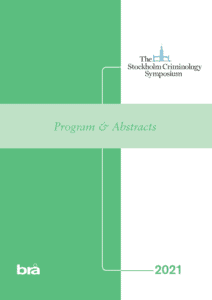Deadly violence in Sweden: Profiling offenders through a latent class analysis

Sweden has in recent years witnessed increasing rates of firearm-related violence and homicide, which has contributed to increased rates of deadly violence. Attempts to profile offenders committing such crimes are of major importance, because such efforts may contribute to better preventive measures. We therefore aimed to study the characteristics of individuals convicted and/or suspected of homicide, attempted homicide, preparation to commit homicide as well as conspiration to commit homicide (for simplicity called homicide+) in Sweden. By using information from the Swedish Crime Register and the Swedish Criminal Suspect Register, individuals being 15–60 years old and convicted and/or suspected of homicide+ between 2000 and 2015 were included in the study. Using these registers and also other population and health care registers, information on previous criminality, substance abuse, and psychiatric disorders were added to the Latent Class Analysis (LCA) that was used to identify latent classes of individuals convicted and/or suspected for homicide+. In addition, several individual variables were added for validation purposes. A total of 14,466 individuals were included in the analysis. The majority were male (n = 12,802;88.5%) and Swedish-born with Swedish-born parents (n = 8247; 57.0%). The LCA identified three classes where Conviction Class (CC) contained mostly convicted individuals whereas Mixed Class A (MCA) and Mixed Class B (MCB) contained almost equal rates of both convicted and suspected individuals. The CC was characterized by individuals with low rates of previous criminality, substance abuse and psychiatric disorders. The MCA and the MCB were characterized by individuals with higher rates of previous criminality, substance abuse, and psychiatric disorders as well as lower education and worse economy in comparison with the CC. While MCA and MCB may be constituted by “traditional” criminals often well known by the police and/or the social authorities, the CC was mainly constituted by convicted offenders who may more easily escape the radar of the authorities.
Ardavan Khoshnood, Henrik Ohlsson, Jan Sundquist, Kristina Sundquist
2021
Swedish National Council for Crime Prevention, Stockholm Criminology Symposium, Stockholm
